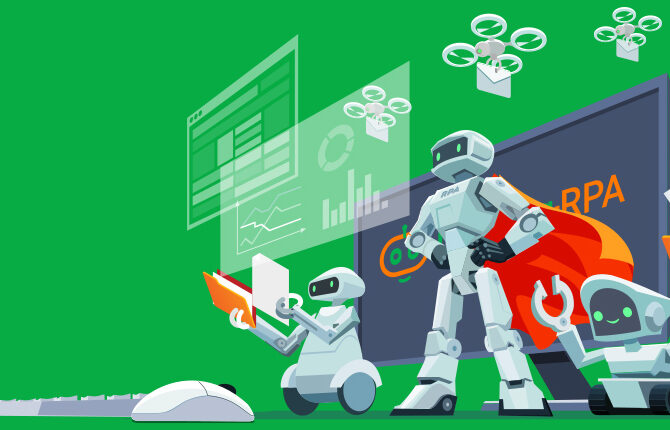
The ultimate guide to Robotic Process Automation (RPA)
Robotic Process Automation (RPA) is a technology that allows businesses to automate repetitive, rule-based tasks with software robots, or bots. These bots can be programmed to perform tasks such as data entry, data extraction, and report generation, freeing up human workers to focus on more complex and strategic work. In this guide, we’ll cover the basics of RPA, its benefits, how it works, and some best practices for implementing RPA in your organization.
What is RPA?
RPA is a type of software that can be trained to automate repetitive tasks, such as data entry or report generation, by interacting with software applications just like a human worker would. Unlike traditional automation methods, RPA doesn’t require any coding, so it can be implemented quickly and easily without the need for specialized IT skills.
What are the benefits of RPA?
The benefits of RPA include increased efficiency, improved accuracy, and cost savings. By automating repetitive tasks, RPA can help businesses reduce errors and increase productivity, allowing employees to focus on higher-value work. RPA can also help businesses save money by reducing the need for manual labor and increasing the speed of processes.
How does RPA work?
RPA works by interacting with software applications just like a human worker would. The software robot is programmed to perform specific tasks within the application, such as opening an email, reading the contents, and extracting data. RPA can also be used to automate tasks across multiple applications, such as copying data from an email and pasting it into a spreadsheet.
What are some best practices for implementing RPA?
When implementing RPA, it’s important to start with a small pilot project to test the technology and identify any potential issues. It’s also important to involve key stakeholders, such as IT and business leaders, in the planning and implementation process. Other best practices for implementing RPA include identifying and prioritizing the most repetitive and time-consuming tasks, choosing the right RPA tool for your organization, and developing a comprehensive governance and control framework to manage the bots.
In conclusion, RPA is a powerful technology that can help businesses automate repetitive, rule-based tasks and free up employees to focus on higher-value work. By following best practices and involving key stakeholders in the planning and implementation process, organizations can successfully implement RPA and reap the benefits of increased efficiency, improved accuracy, and cost savings.



